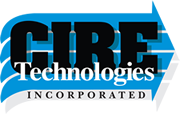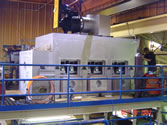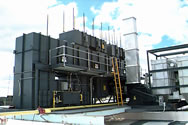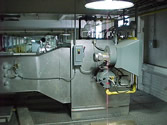Log in
Cire Technologies Blog
Principles of Direct Impingement Dryer Design Series – Paper No. 1 of 8
There are two primary types of convection dryers used in the converting industry, direct impingement and flotation, each with their own benefits for particular converting industry products. Drying is a process made up of two basic actions; application of heat energy to provide the heat of vaporization to the liquid you are drying, which turns it into vapor and is called heat transfer; and mass transfer, which is the means to which the vapor is removed from the product surface. This series will specifically address the heat transfer aspect of drying and touch more briefly on the practical matters of mass transfer.
In the next weeks look here for a series of papers that discuss the various uses of, and design principles behind good direct impingement dryer design for the converting industry, in particular the web converting industry.
What is the converting industry? In the web converting industry continuous webs of paper, film, metal coil, foil or textiles are physically changed, converted. Some converting entails one or more of the following processes that require drying or heating the web.
- Coating
- Printing
- Laminating
- Heat Treating including curing and sintering
In each case a direct impingement dryer can be used as the means to heat or dry the product. Coating converting applies a solid to the web in a solution, usually water or solvent based, and drying the liquid portion of the solution from the web leaving behind the solids as a coating. Printing is similar to coating where inks are deposited on the web and the liquid is dried off leaving behind the print ink solids. In laminating an adhesive is applied between two or more webs and the liquid used to apply the adhesive solution is driven off by applying heat to the web. Lastly, heat treating can change the properties of a web by applying heat to the web, in some cases adding steps to the drying step such as curing and sintering.
This series of papers covers the following subjects pertaining to impingement dryers for the converting industry, in particular web dryers.
- What is direct impingement heating/drying and how is direct impingement heat transfer achieved?
- What process data is used to properly design impingement dryers?
- How do you calculate the product load?
- What variables of impingement dryer design can be used to match the dryer performance to the process requirements?
- What are the primary components of an impingement dryer?
- And lastly we provide a sample dryer project.
Look here soon for the answers to these questions.
When you subscribe to the blog, we will send you an e-mail when there are new updates on the site so you wouldn't miss them.





Comments